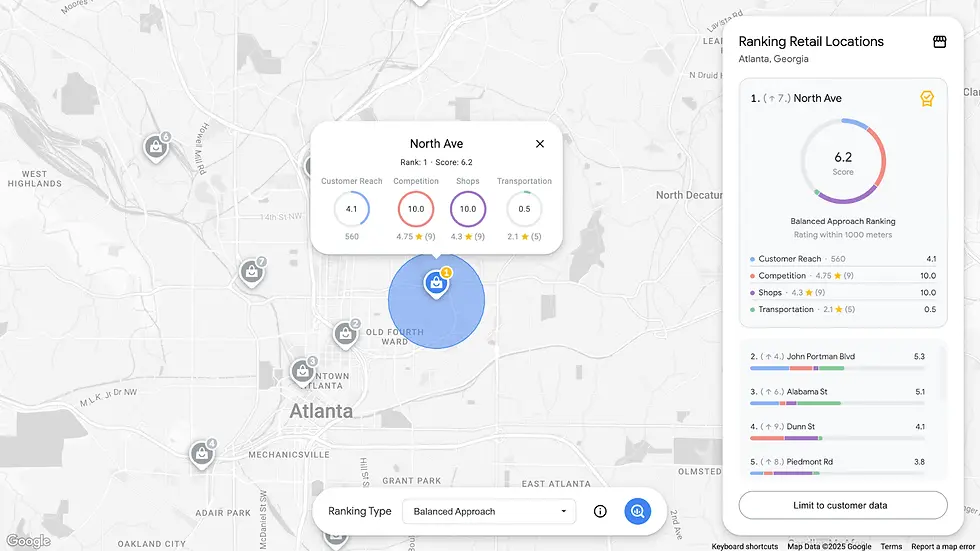Enhance Customer Satisfaction and Cut Costs with Route Optimisation
- 28East

- Oct 2, 2024
- 3 min read

The pressure for fast, reliable deliveries has never been greater. Consumers don’t just expect their orders to arrive quickly—they demand precision, transparency, and minimal environmental impact. For companies in the transport, logistics, and delivery sectors, this presents a tough challenge: balancing resource efficiency with their customers' ever-growing expectations. Enter route optimisation, a game-changing solution that streamlines operations and helps businesses deliver smarter, faster, and greener.
Key Benefits of Route Optimisation
Route optimisation uses advanced algorithms and tools, like Google’s Route Optimisation API, to plan the most efficient routes for deliveries. It factors in constraints such as vehicle capacity, driver schedules, traffic conditions, and time windows. Implementing a robust route optimisation strategy offers numerous benefits for businesses, consumers, and the environment.
1. Cost reduction
One of the most significant benefits of route optimisation is its ability to cut operational costs. The logistics sector operates on tight margins, so reducing delivery expenses can have a profound impact on profitability. Route optimisation achieves cost savings in several ways:
Minimising distance travelled: By optimising the sequence of stops, companies can reduce the total distance their vehicles travel. This directly lowers fuel consumption, reducing the overall cost per delivery.
Maximising vehicle capacity: Optimised routing ensures that each vehicle operates at maximum capacity, reducing the need for additional trips or vehicles.
Lower maintenance costs: Fewer miles on the road mean less wear and tear on vehicles, extending their lifespan and reducing maintenance expenses.
These cost-saving measures are particularly critical for businesses with large delivery networks, where even small efficiency improvements can lead to substantial savings.
2. Enhanced customer experience
In the competitive e-commerce space, delivering a superior customer experience is crucial. Today’s consumers demand more than just fast deliveries; they want transparency and predictability.
Route optimisation enhances customer satisfaction by ensuring accurate delivery times, as it factors in real-time traffic conditions and other variables, allowing deliveries to be made within the promised window and reducing missed or delayed deliveries. It also improves tracking by providing better visibility of deliveries, so customers receive precise updates on the estimated time of arrival (ETA), which increases transparency and trust. Additionally, optimised routes reduce delivery times, especially in industries like food delivery or urgent courier services, ensuring customers receive their orders faster.
3. Environmental sustainability
With growing awareness of environmental issues, sustainability has become a critical concern for businesses and consumers alike. Route optimisation plays a key role in helping companies achieve their sustainability goals by reducing carbon emissions, as fewer miles travelled means less fuel consumed, directly lowering the carbon footprint of each delivery. For businesses with large delivery fleets, the cumulative impact can be substantial. Additionally, by maximising vehicle capacity and minimising unnecessary trips, companies can reduce the number of vehicles on the road, further decreasing emissions and fuel consumption. Many businesses also incorporate route optimisation into their sustainability strategies, aligning their operations with eco-friendly practices that resonate with environmentally conscious consumers.
4. Operational efficiency and flexibility
Route optimisation provides businesses with the tools to operate more efficiently and adapt to changing conditions:
Real-time adjustments: Modern route optimisation solutions can make real-time adjustments to delivery plans, accounting for unexpected changes like traffic accidents, road closures, or new delivery requests. This flexibility ensures that operations continue smoothly, even when the original plan is disrupted.
Reduced planning time: Automating the route planning process saves significant time for logistics teams, who no longer need to manually create delivery schedules. This allows them to focus on more strategic tasks, improving overall productivity.
Optimised driver schedules: Route optimisation ensures that drivers are assigned to the most efficient routes, reducing the number of hours spent on the road and ensuring they comply with legal driving time limits. This not only enhances efficiency but also improves driver satisfaction and safety.
5. Improved resource allocation
Route optimisation helps businesses make better use of their available resources by ensuring better utilisation of vehicles, as optimised routing allows each vehicle to operate at full capacity, reducing the need for additional vehicles and minimising fleet expansion costs. It also leads to the efficient use of driver time, as drivers are assigned the most effective routes, allowing them to spend their time productively and complete as many deliveries as possible during their shifts. Furthermore, route optimisation reduces idle time spent in traffic or waiting for the next delivery, which improves overall delivery efficiency and maximises the productivity of both vehicles and drivers.
Implement Smarter Route Optimisation Today
The benefits of route optimisation are clear: it reduces costs, enhances customer satisfaction, supports sustainability initiatives, and improves operational efficiency. By adopting advanced tools like Google’s Route Optimisation API, companies can streamline their logistics processes, delivering better results for both their customers and the environment.
For businesses in the transport, logistics, and delivery sectors, the time to invest in route optimisation is now. Contact us today to find out how 28East can help you implement cutting-edge route optimisation solutions that transform your operations and drive success.




Comments